Ballinorig House
Houses within 5km of this house
Displaying 29 houses.
Houses within 5km of Ballinorig House
Displaying 29 houses.
| House name | Description | |
|---|---|---|
| Caherwisheen | Robert A. Thompson was in possession of this property at the time of Griffith's Valuation, when it was valued at £15. | |
| Ballyard House | At the time of Griffith's Valuation, Francis Crosbie was leasing Ballyard House from Reverend Arthur Rowan, when it was valued at £35. The Colthurst Estate sale notice of 1856 notes that Thompson leased the property from Nicholas Colthurst in the 1820s and that A.B. Rowan was an assignee of Thompson. Bary states that this house was possibly re-modelled by Peter Thompson in the late 1820s. |

|
| Ballyard | The representatives of Peter Foley were leasing a property at Ballyard to Margaret Crosbie at the time of Griffith's Valuation, when it was valued at £30. Lewis records Ballard as the seat of Francis Crosbie in 1837. | |
| Ballyard B | Geoffrey Eager was leasing a property to Patrick Ryan at the time of Griffith's Valuation, when it was valued at £15. | |
| West Villa or West Lodge | Edward Mulchinock was leasing this property from Sir George Colthurst at the time of Griffith's Valuation when it was valued at £15. Bary writes that this is the house associated with William Mulchinock, the writer of the famous song "The Rose of Tralee". It is still extant and occupied. | |
| Cloghane Lodge or Fortlands | At the time of Griffith's Valuation, it was being leased by Francis Fitzgerald to Andrew Shea and was valued at £15. It is still extant. Bary writes that this house was built by the Conway family, possibly in the seventeenth century. It was eventually sold by Nicholas Conway Colthurst to Peter Thompson in the 1820s. The 1856 sale notice records Francis Fitzgerald as the assignee of Peter Thompson. | |
| Cloghers House | In 1786 Wilson refers to Cloghers as the seat of Richard Yielding. John Mulchinock was leasing two adjoining properties from the Colthurst estate at the time of Griffith's Valuation, one valued at £50 and the second at £15. The Irish Tourist Association Survey notes that Cloghers was "once the home of the Mulchinock family who were big landowners" and relates the story of the song "the Rose of Tralee". Bary writes that this property was associated with the Carrigue family in the eighteenth century and also that John Mulchinock was an uncle of William Mulchinock, author of the song. She indicates that it was later owned by the Fitzmaurice family. It is still extant. |
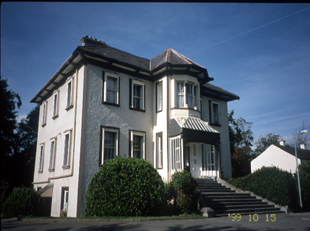
|
| Belmont | Reverend Arthur Rowan was leasing Belmont from Arthur Chute at the time of Griffith's Valuation, when it was valued at £40. Lewis records it as the seat of Reverend A.B. Rowan in 1837. The Ordnance Survey Name Books suggest the house was built by his father in 1826 and cost £1500. However, Bary states that the house, in common with other houses in the vicinity, was built by Peter Thompson in the 1820s, when he was Treasurer of County Kerry. It is still extant and occupied. |
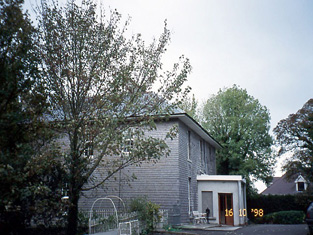
|
| Spring Lodge | Rev. Arthur Rowan was leasing this property to Robert Bell at the time of Griffith's Valuation, when it was valued at £15. Lewis records Spring Lodge as the residence of F.J. Martelli in 1837. Bary states that this is another of the houses built by Peter Thompson in the 1820s. Rowan was married to his daughter Alicia and they lived at nearby Belmont. Spring Lodge is still extant. | |
| Lohercannon House | Catherine Day was leasing this property to Richard Murphy at the time of Griffith's Valuation when it was valued at £15. In 1786 Wilson refers to "Lower-cannon" as "formerly the seat of Rev. Mr. Day, accidentally destroyed by fire". The Ordnance Survey Name Books describe it as the seat of Edward Orpen but originally built by the Day family. Lohercannan is referred to in the Irish Tourist Association Survey of the 1940s as "another building that would be worht a visit".The second house also seems to have been held by the Days but leased out to other families including the Morrises and Eagers. It was demolished to make way for housing in the 1960s. | |
| Chute Hall | Richard Chute was occupying Chute Hall at the time of Griffith's Valuation, when it was valued at £37 10s. Lewis also records it as his residence in 1837. The house is named "Tullygarran House" on the 1st edition of the Ordnance Survey map and is so described in the Ordnance Survey Name Books where it is noted it was "three stories high and about a century old". The house later became known as Chute Hall. Bary notes that the Chutes had been resident in this area since the seventeenth century on what had been McElligott land. In 1894 it was the residence of Mrs. Chute. Richard, the last of the Chutes to live here, died in 1936. In 1943 the Irish Tourist Association Survey noted Chute Hall "now almost a wreck but once a fine imposing structure." The house has been demolished but the substantial gateway remains inside which are some fine ogham stones. |

|
| Rathanny House | Elizabeth Rowan was leasing a property to Patrick Holohan at the time of Griffith's Valuation, when it was valued at almost £3. Lewis refers to Rathanny as the residence of Mrs. Rowan in 1837. In the 1830s the Ordnance Survey Name Books noted the house, built c.1730, as the residence of Mrs. Rowan In 1786 Wilson mentions Ratanny as the seat of Mr. Rowan. Bary states that the house was built by the Rowan family in the eighteenth century and lived in by them for much of the early nineteenth century. It was sold in the early twentieth century and is still extant and occupied. |
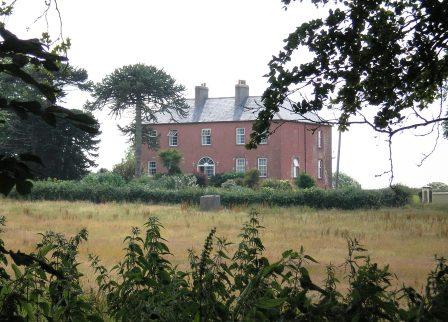
|
| Spring Hill | Richard Chute was leasing Spring Hill to Penelope Chute at the time of Griffith's Valuation, when it was valued at £23. Bary notes that Richard Chute enlarged and extended an existing house here in 1816. Lewis records the house as the seat of Captain Chute in 1837. The Ordnance Survey Name Books note that the original house was thatched but the house existing in the 1830s was "two stories high and neatly built". In the later nineteenth century, the Linden family, agents to the Chutes occupied Spring Hill and remained into the twentieth century. It is now ruined and overgrown. |
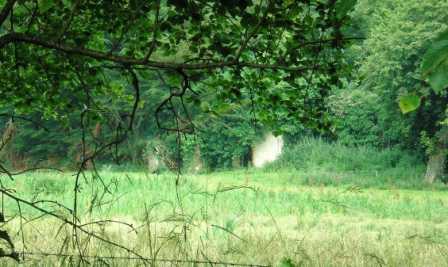
|
| Shanvally | Thomas Blennerhassett was leasing this property to Robert Conway Hurley at the time of Griffith's Valuation, when it was valued at £20. n the 1830s the Ordnance Survey Name Books describe it as the seat of Thomas Blennerhassett, who had built it in 1835. In 1786 Wilson had noted a seat of the Blennerhasset family close to the Rowan house, Ratanny. Bary states that Shanvally was built by the Blennerhassetts as a hunting lodge, possibly in the late eighteenth or early nineteenth century. It is still extant and occupied. | |
| Kilquane | Charles Blennerhassett was leasing this property to Thomas Rooney at the time of Griffith's Valuation, when it was valued at £3, on a farm of 130 acres. This may be the property to which Wilson refers as the seat of William Blennerhasset in 1786 which he names Elm-Grove. A substantial farm is extant at the site. | |
| Knockavinnane Cottage | James Hussey was leasing this property to Alexander Mason at the time of Griffith's Valuation, when it was valued at £15 15s. A portion of the original building is still extant. | |
| Ashgrove Mill | John Busteed and Arthur Rowan were the lessors of a house and mill at Tonreagh, vacant at the time of Griffith's Valuation, when the complex was valued at £25 15s. | |
| Ballycarty House | At the time of Griffith's Valuation, Charles Blennerhassett was leasing this property to Rev. Edward Nash, when it was valued at £19 5s. Bary states that it was occupied by the Nash family from the late eighteenth century and that it was destroyed in 1922. In 1786 Wilson notes the existence of the ruins of Ballycarty Castle, the property of Mr. Nash. | |
| Ballyseedy Castle | Ballyseedy was a seat of the Blennerhassett family for many generations. Charles Blennerhassett was occupying it at the time of Griffith's Valuation when it was valued at £60. Lewis recorded that Sir Edward Denny was living there in 1837 but that it was a seat of the Blennerhassett family. In 1906 it was owned by Arthur Blennerhassett and valued at £65. The National Inventory of Architectural Heritage (Buildings of Ireland) report states that the house was built c.1760 but renovated and extended at least twice in the nineteenth century. The Irish Tourist Association survey in 1942 reported that the owner then was Miss Hilda Blennerhassett. It remained in the ownership of the Blennerhassett family until later in the twentieth century when it was sold and became Ballyseedy Castle Hotel. [www.ballyseedecastle.com]. |

|
| Glenduff House | Robert Conway Hurley was leaing this property to John Hurley at the time of Griffith's Valuation, when it was valued at £5 15s. In 1906 it was the property of John C. Hurley and valued at £10 15s. Bary writes that the Hurley family owned Bridge House in Tralee but also retained Glenduff House as their country estate. The house remained in the Hurley family until it was sold in the early twentieth century. It has been extensively renovated and is now a guesthouse. |
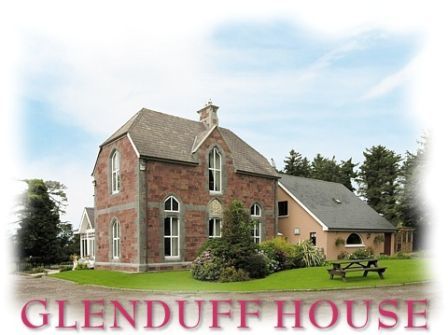
|
| Parkearagh | John Keane was leasing this property from Lord Ventry's estate at the time of Griffith's Valuation, when it was valued at £6. A substantial farm is extant at the site now. | |
| Doon House | At the time of Griffith's Valuation, William M. Hickson was in possession of this property, then valued at £9 15s. | |
| Oakpark or Collis-Sandes House | Maurice Sandes was in possession of this property at the time of Griffith's Valuation, when it was valued at £60. It is labelled as Oakpark on the 1st edition Ordnance Survey Map. In 1837 Lewis recorded Oakpark as the seat of John Bateman. Bary writes that, Killeen, the original house at this site, was a late seventeenth century house. It was followed by Oakpark, built by John Bateman in the 1820s. This is the house mentioned by Wilson in 1786 as the seat of Rowland Bateman. Maurice Sandes purchased the estate in the late 1840s and built the later Oakpark House c.1857. In 1906 this house was owned by Falkiner Sandes and valued at £112. The house was sold in 1922 and is now used as offices. |
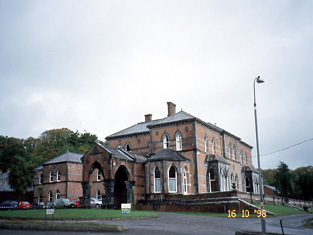
|
| Ann's Villa [Oak Villa] | Thomas Payne was leasing this property from Sir Edward Denny's estate at the time of Griffith's Valuation, when it was valued at £30. The house is labelled Ann's Villa on the 1st edition Ordnance Survey map. A more substantial building, known as Oak Villa, appears on the 25-inch edition of the 1890s. Buildings are still extant at the site. | |
| Lee Brook | Francis Raymond was leasing this property to Richard Roland Chute at the time of Griffith's Valuation when it was valued at £30. In 1906 it was owned by Rowland Chute and valued at £30. Bary states that this house was associated with the Chute family and may have been built by them in the eighteenth century. It remained in the family until the 1930s and is still extant and occupied. The 25-inch edition Ordnance Survey map indicates an additional house in the townland, labelled Lee Brook House. A much enlarged version of this building now serves as Ballygarry House Hotel [Q866134]. | |
| Lismore | Edward Day Stokes was in possession of the house at Lismore at the time of Griffith's Valuation, when it was valued at £13 10s. Bary writes that the house was associated with the Martelli family who were related by marriage to the Blennerhassetts. Later it was occupied by Collis and Huggard families. It is now a ruin. | |
| Mount Hawk | In 1906 Mounthawk was owned by Elizabeth Stokes and valued at £18 5s. The townland was in the possession of George Stokes at the time of Griffith's Valuation. Bary states that it was built by George Stokes on lands purchased from the McCarthy family and remained in the Stokes family well into the twentieth century. It was later used as a clubhouse by Tralee Golf Club. | |
| Tralee | At the time of Griffith's Valuation, Francis Crumpe was leasing a property, valued at £31, at Denny St., Tralee, from John Donovan. [Grid Reference is approximate]. | |
| Tralee Castle | In 1786 Wilson writes "at Tralee is a castle in tolerable preservation, formerly one of the castles of the Earls of Desmond, granted by Queen Elizabeth to Sir Anthony Denny, and now the seat of his descendent, Sir Barry Denny". In 1943 the Irish Tourist Association Survey mentions that the last reconstruction of the building occurred in 1802. Bary writes that, after the Act of Union, the Denny family spent more time in England and the castle fell out of use and was eventually demolished and the stones used for other buildings. |

